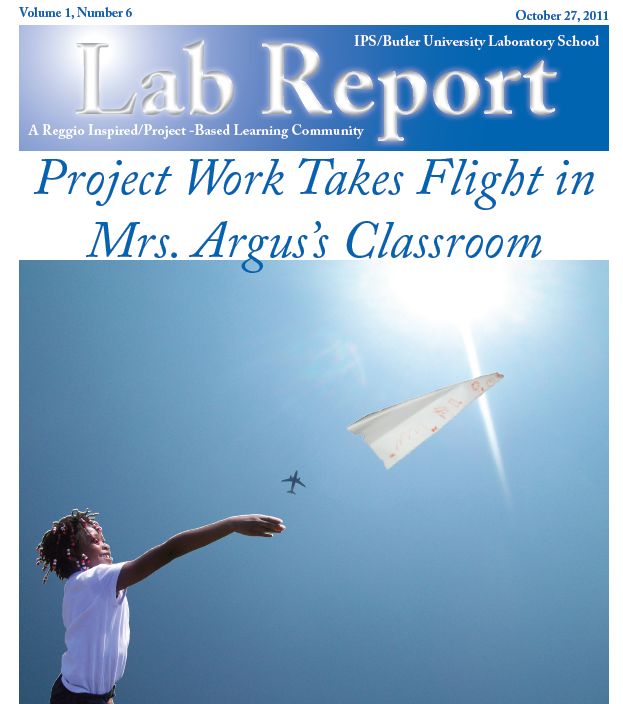Nov 07 2012
Projects for Students and Teachers!
In several of our classes, this week involved going deeper into project work, or in some cases, introducing new projects. The students really enjoy working on projects, and this week has given us a glimpse into how beneficial project work can be, and how much students can learn while having fun at the same time.
In Mrs. Argus’ class this week, we began a new teacher-driven project about listening and sound. We are researching whether we can affect and potentially improve the students’ behavior, communication, and listening skills through their investigation of sound waves and the human aural system.
We initiated the project today by allowing the children to explore various tools and materials they can use to make sound. We spread out a large sheet of paper with writing materials to have them write or draw what they heard. Interestingly enough, several students drew their sounds as waves before we even offered any explanation of the way sound works. I’m interested to see what effect all this exploration and discussion will have on their own listening habits.
In Mrs. Bucher’s class, the students have been studying weather, and since Hurricane Sandy happened recently, they have used this event to enhance their learning experience. The students have decided to make a play about hurricanes and hurricane safety. They plan to charge “admission” into the show and then donate the money to help hurricane victims. Through this project work, the students have been able to connect their learning to the real world experiences that are happening. It is exciting to see them become interested and excited to learn about weather, make weather experiments, and help the victims of Hurricane Sandy.
In readers workshop, the students in Mrs. Bucher’s class have learning a new strategy to add to their toolbox: flippy dolphin. Miss Jeffrey and Mrs. Bucher have been teaching the students about short and long vowel sounds, so the students can use flippy dolphin to try an unknown word using a short vowel sound and then “flipping” it to a long vowel sound to see which one makes sense. The students have used this strategy many times and even found examples of this is Miss Wessels’ read aloud!
In Miss Cegielski’s class, the students have been working on a project about science. They learned about and explored various science tools such as pipets, magnifying glasses, thermometers, and hydrometers. The students were particularly interested in water, so that has become the focus of the project. Yesterday they took a field trip to the Children’s Museum. To prepare for the trip, they practiced using hydrometers and measuring the density of different types of liquids – plain water, salt water, and gatorade. They learned that the more “stuff” there is in the water, the more dense it is. They received a sample of water that leaked from an exhibit at a museum, and before the trip they all got to guess what type of water it was by comparing the stain to some other stain samples, including water, water with glue, saltwater, and saltwater with glue. They decided the water that made the stain must have a higher density than pure water, because the stain had some “stuff” in it.
Then yesterday at the Children’s Museum, the children split up into groups and went to the different exhibits, testing the water with thermometers and hydrometers. Today we had the kids analyze their data, and we made a chart as a class, listing the temperature and the density of each water sample. Using that data, they were able to tell that the leak was coming from the aquarium exhibit, because that sample had the highest density. The children were really excited to have “cracked the case.” They also got a note from Mrs. Clark’s class, saying that they had come to the same conclusion. The students asked Miss Cegielski if they could go back to the Children’s Museum to investigate further. 😉 Obviously we won’t be able to take another field trip anytime soon, but it was so cool to see that the students were so excited about this project and wanted to keep investigating and learning more. It’s such a great testament to the power of the Project Approach.
By Cayla Weese, Ashlee Hammer, and Kara Gitskin


